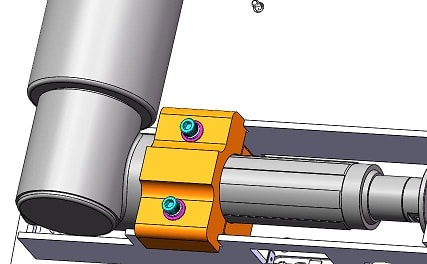Hi.
We have an actuator clamp top and bottom (SS) designed that holds a linear actuator in place and I need help with determining/calculating torque specification (in-lb) on the two screws that secure this assembly.
I have attached an image here of the assembly.
Bolt specification:
10-32 UNF 2A, SHCS
L= 2 3/8"
Material= 18-8 SS
(No special coating)
This linear actuator would be exposed to ~850 lbf and I want to ensure the screws secure the clamps adequately. Please help with determining what torque spec should be specified here.
If additional information is needed please message here. Thank you.
We have an actuator clamp top and bottom (SS) designed that holds a linear actuator in place and I need help with determining/calculating torque specification (in-lb) on the two screws that secure this assembly.
I have attached an image here of the assembly.
Bolt specification:
10-32 UNF 2A, SHCS
L= 2 3/8"
Material= 18-8 SS
(No special coating)
This linear actuator would be exposed to ~850 lbf and I want to ensure the screws secure the clamps adequately. Please help with determining what torque spec should be specified here.
If additional information is needed please message here. Thank you.

![[jester2] [jester2] [jester2]](/data/assets/smilies/jester2.gif) if it is tightened enough.
if it is tightened enough.